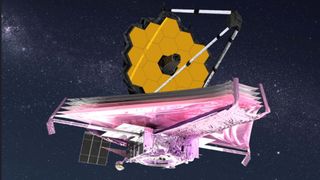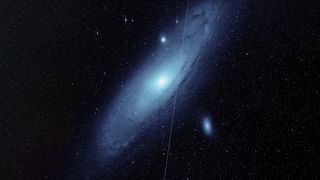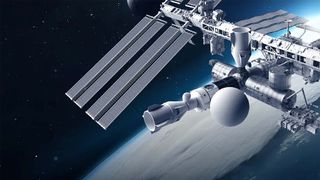Webb deployment, Martian flight delays, and more in this week's science news
There was more than Webb happening this week

It's a new year and we're back with the weekly science round-up with all the latest happenings in science and technology, from space to the life sciences, and there's been a lot to talk about.
Obviously, the James Webb Space Telescope deployments have been front and center as we prepare for next week's final insertion burn, but we got some news on the space commercialization front, though not all of it has been good.
In a weird historic first, we've seen the first flight delay due to inclement weather on another planet, and back here on Earth, we caught sight of a strange circumstance of Orcas actually being nice (we think?) to a humpback whale rather than killing it because they're jerks.
It's been a heck of a week, so let's dig in.
Webb Deploys All 18 Mirror Segments Successfully

The James Webb Space Telescope successfully deployed all 18 of its primary mirror segments, marking the last major deployment of the mission before it attempts an insertion at Earth's second Lagrange point (L2) early next week.
"Just in from the @NASAWebb team: All 18 primary mirror segments and the secondary mirror are now fully deployed!" tweeted NASA Administrator Bill Nelson on January 19. "Congratulations to the teams that have been working tirelessly since launch to get to this point. Soon, Webb will arrive at its new home, L2!"
With all 18 hexagonal segments of the mirror in place, there will be a number of months taken for alignment and focusing on the telescope. The alignment of the individual segments right now is within a few millimeters, but by the time the adjustments are complete, they will be aligned to within 10s of nanometers.
Get daily insight, inspiration and deals in your inbox
Get the hottest deals available in your inbox plus news, reviews, opinion, analysis and more from the TechRadar team.
Assuming that next Monday's L2 insertion goes according to plan. Stay tuned!
Starlink Satellites Threaten Astronomical Observations

On the flip side of astronomy news, it turns out that Starlink satellites have been streaking across nearly 20% of the Zwicky Transient Facility's twilight observations, greatly complicating some of our most important astronomical work.
"In 2019, 0.5 percent of twilight images were affected, and now almost 20 percent are affected," said Przemek Mróz, an astronomer who led a recent study of twilight observations and the impact Starlink satellites is having on them.
"We don't expect Starlink satellites to affect non-twilight images," he added, "but if the satellite constellation of other companies goes into higher orbits, this could cause problems for non-twilight observations."
These observations are critically important for monitoring near-Earth objects like asteroids that might one day cross our orbit, as they have in the past with devastating impact.
Did Orcas Free A Tangled Humpback Whale?

Drone footage published by Whale Watch Western Australia showed a remarkable incident off the Australian coast when an injured and weakened humpback whale that had become caught up in a tangle of rope received critical assistance from an unlikely source: a pod of orcas, also known as "killer whales".
After being discovered by a pair of orca males named Hookfin and Blade (by the researchers, not the orcas themselves...we think?), the rest of the pod followed and circled the helpless humpback.
"Matriarch Queen arrived and moved towards the Humpback Whale which caused a commotion of white water and then something incredible happened…a large chunk of the green rope that was entangling this Humpback Whale floated free behind him," the researchers wrote in a description that accompanied the YouTube video.
What makes this extraordinary is that orcas have something of a reputation for being rather merciless predators. As remarkably intelligent pack hunters, a pod of orcas regularly bring down prey larger than themselves, other whales included.
No one can say for certain whether the orcas were indeed assisting the whale or whether they just lost interest in killing it is an open question, but given the complex social systems that orcas develop amongst themselves, it's not out of the question that it was a genuine act of altruism on their part.
ISS to Get a Film Studio in 2024

The International Space Station (ISS) may also be getting an upgrade in 2024, but not one that you might think.
This week, Space Entertainment Enterprise announced that it was working with Axiom Space to build a new module for the ISS that could be used as a film studio, bringing the commercialization of space into pretty sharp focus.
A Russian film crew has already shot footage aboard the ISS for an upcoming film, and NASA confirmed in 2020 that Tom Cruise was working with the agency to shoot a new movie aboard the orbital station.
Given that the ISS's original mission was slated to end in 2024 before being extended by NASA to 2030. Russia's space agency, Roscosmos, has already said it will be leaving the ISS in 2024, so primary responsibility for the $4 billion annual operation of the ISS will fall even more heavily on NASA.
NASA has already said it was working with companies like Axiom Space and SpaceX to accelerate commercial operations in low Earth orbit so the agency could pivot towards the Artemis Moon mission and eventual human landing on Mars.
I honestly didn't think a film studio would be one of the first out the gate, though.
Mars Ingenuity Flight 19 Delayed Over Mars Weather

Weather delays have been grounding flights for more than a century now, but never has it happened on another planet.
NASA's Mars Ingenuity helicopter became the first aircraft to ever experience a weather-related flight delay on another planet when an unexpected dust storm earlier this month forced the delay of Ingenuity Flight 19 on January 5.
The flight has been rescheduled for January 23.
The delay is more concerning than many might think, as it marks the early start of the Martian Autumn, a period of increased dust storm activity and higher winds, neither of which is great news for a solar-powered helicopter drone.
A major dust storm in 2018 went on to covered the entire planet and prevented the Mars Opportunity rover from recharging its batteries, eventually leading to the end of the rover's mission when NASA could not reestablish communications.
"We will remain diligent in our efforts to safely fly Ingenuity for the foreseeable future," Ingenuity's weather and environment specialists said this week. Hopefully all goes well in the year ahead for the intrepid helicopter.

John (He/Him) is the Components Editor here at TechRadar and he is also a programmer, gamer, activist, and Brooklyn College alum currently living in Brooklyn, NY.
Named by the CTA as a CES 2020 Media Trailblazer for his science and technology reporting, John specializes in all areas of computer science, including industry news, hardware reviews, PC gaming, as well as general science writing and the social impact of the tech industry.
You can find him online on Threads @johnloeffler.
Currently playing: Baldur's Gate 3 (just like everyone else).
